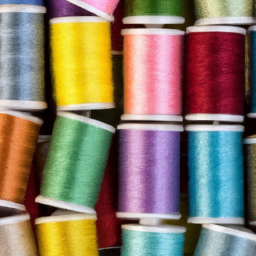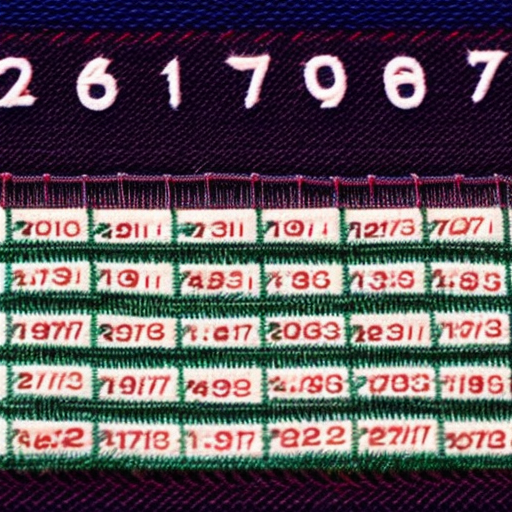
The sewing thread numbering system is an important aspect of the garment manufacturing industry. It helps identify and classify different types of sewing threads based on their thickness and weight. Understanding the numbering system is crucial for selecting the right thread for specific sewing applications.
In this system, threads are categorized under two main classifications: Tex and Ticket numbers.
Tex Numbering System
The Tex numbering system is widely used in most parts of the world. It measures the weight of the thread in grams per 1,000 meters (g/1000m). For example, a Tex 30 thread means that 30 grams of thread are required to span a distance of 1,000 meters.
In Tex system, a higher number indicates a thicker thread, while a lower number indicates a thinner thread. It is essential to use the appropriate thread thickness to ensure the durability and strength of the sewn product. Tex size is commonly used for industrial sewing, upholstery, and outdoor applications.
Ticket Numbering System
The Ticket numbering system is predominantly used in the United States. It measures thread thickness based on the number of hanks, each containing 840 yards, required to weigh one pound. The ticket number is represented with the letter T or a # sign and followed by the number. For example, T-50 or #50 thread.
With the ticket numbering system, a higher number indicates a thinner thread, while a lower number indicates a thicker thread. The ticket system is commonly used for domestic sewing, embroidery, and quilting applications.
Choosing the Right Sewing Thread
Selecting the right thread thickness is crucial for achieving optimal sewing results. Too thin a thread might compromise the strength of the stitch, while too thick a thread may cause problems in the sewing machine or affect the overall appearance of the garment.
It is advisable to follow the manufacturer’s recommendations and consider the intended use of the sewn product while choosing the thread. Additionally, conducting thread tests on fabric swatches before starting a sewing project can help determine the most suitable thread thickness.

Conclusion
Understanding the sewing thread numbering system is crucial to ensure the success of any sewing project. Whether you’re involved in industrial sewing or domestic applications, knowing the Tex or Ticket numbers will help in selecting the appropriate thread thickness. Always consider the intended use of the sewn product and conduct proper thread tests for reliable and durable stitching.





This is a great resource for learning about the different types of sewing thread!
Maria Simão: Very interesting information!
This is perfect for anyone who wants to learn more about the fundamentals of sewing – the numbering system helps differentiate between the different types of thread and provides a guide to choosing the appropriate one for your project!
This is such a helpful system for anyone who is just getting started with sewing! It’s amazing to have this kind of comprehensive information easily available.
A great explanation of the sewing thread numbering system – it seems so complicated, but it’s user friendly and concise, making it a very valuable resource for beginners and experts alike.
Absolutely essential for any sewers! It’s great to have such a comprehensive rundown of the different types of thread and the numbering system that is used to categorise them. A really practical and helpful guide.